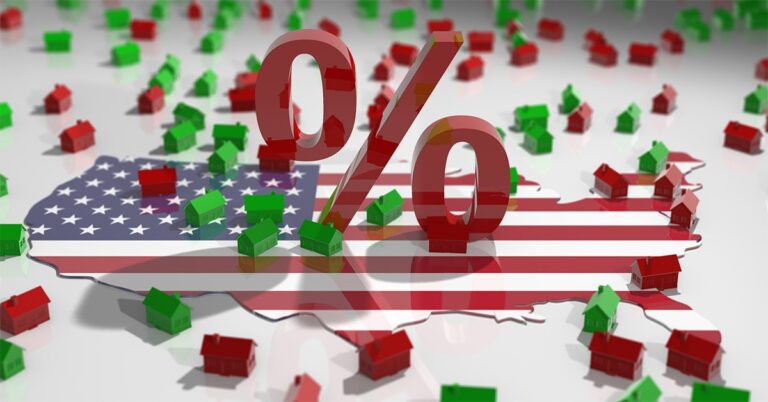An impending economic downturn coupled with ongoing macroeconomic uncertainty could have dramatic implications on a commercial real estate sector that’s already having to navigate increasingly choppy waters, according to newly released commentary from Wells Fargo.
Banks have significantly tightened their commercial real estate lending criteria of late, noted Wells Fargo economists Charlie Dougherty and Patrick Barley. The Federal Reserve’s senior loan officer opinion survey for fourth-quarter 2022 revealed that the share of banks that tightened their lending standards for multifamily, nonresidential, construction and land development loans grew to the highest level since the height of the COVID-19 pandemic and is nearing the apex reached during the global financial crisis of the late 2000s. The turmoil currently plaguing regional banks — many of which have increasingly become players within commercial mortgage lending — is likely to further squeeze credit conditions for business-purpose borrowers.
Commercial real estate fundamentals have remained generally resilient thus far, despite every curveball thrown by the economy of late. But these fundamentals are nonetheless trending downward. Dougherty and Barley posit that the most recent straw of tighter credit standards could break the camel’s back.
“In our view, more restrictive lending boosts the odds the economy enters a recession,” the economists wrote. “While there is likely to be significant variance among property types and across geographies, commercial real estate fundamentals will likely deteriorate if a downturn comes to fruition, as we currently anticipate.”
Specifically, as lending has tightened, the market has begun to see some intensified levels of distress. Commercial and multifamily loan delinquencies were still low in the fourth quarter of last year but started to creep upward for mortgages held by banks and thrifts, life insurance companies and commercial mortgage-backed securities (CMBS). The recently much-maligned office sector could see the largest increase in the near term, considering uncertain demand along with high (and still rising) vacancy rates.
The latest crop of commercial loan maturations also looms as a headwind, per Wells Fargo. According to data from MSCI Real Assets, there are $400 billion in commercial mortgages set to mature this year, with another $500 billion in 2024. With access to credit reduced (and possibly curbed completely if lenders pull back during a recession), borrowers who took out a loan and need to refinance may find it more difficult to do so, amplifying the potential for further distress.
Additionally, a recession would further weigh down commercial property fundamentals such as net absorption and new development, which in turn would hold back rent growth and valuations. Asset prices experienced a quick run-up as the commercial market rebounded from the COVID-19 pandemic. As of February, however, MSCI’s all-property price index had fallen by 9.3% from its peak in July 2022. Multifamily prices have declined the fastest, with MSCI’s subindex for the sector sinking 13.1% over the same time frame.
Dougherty and Barley suggest that commercial real estate valuations have even further to fall before they hit bottom.
“After generally taking a downward trajectory for much of the past decade, cap rates have increased in recent months alongside the leg up in long-term interest rates,” they said. “Sales of commercial properties have downshifted notably, which means price discovery through appraisals on comparable properties has been minimal. Thus, private measures of property prices are likely not fully reflecting current market conditions.”






